AMD has officially launched its first laptops powered by Ryzen AI 300 “Strix” APUs that combine a Zen 5 CPU, RDNA 3.5 GPU, and XDNA 2 NPU cores.
AMD’s First Copilit+-Compatible APUs Are Here! Meet the Ryzen AI 300 “Strix” Laptop Family, Featuring Up to 12 Zen 5 Cores, 16 RDNA 3.5 GPU Cores, and 55 TOPS XDNA 2 NPUs
The AI PC ecosystem is evolving by the second, with everyone trying to get their piece of the pie. AMD was essentially the first chipmaker to introduce an “AI PC” SOC with its Phoenix APU family in 2023, followed by the release of the much-improved Hawk Point series, which offered higher NPU TOPS.
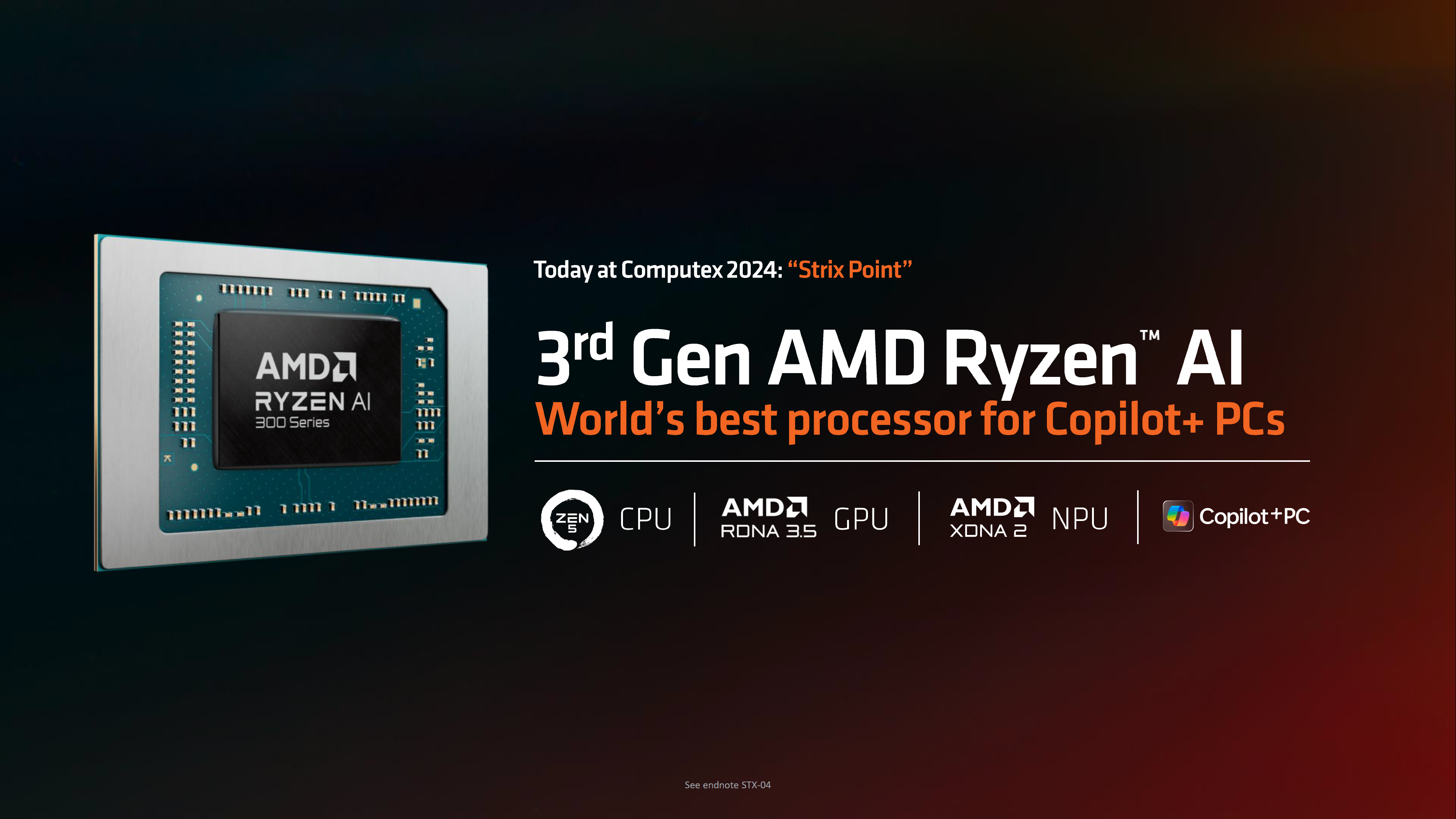
With the arrival of the Microsoft Copilot+ PC platform, AMD is taking it a step further and introducing its Ryzen AI 300 “Strix” platform that combines several aspects to meet the demand for these transformational next-generation AI experiences in the consumer world. For AMD, the goals are very clear: deliver increased AI performance, offer new rich GenAI and Copilot+ experiences, and all this locally on the PC.


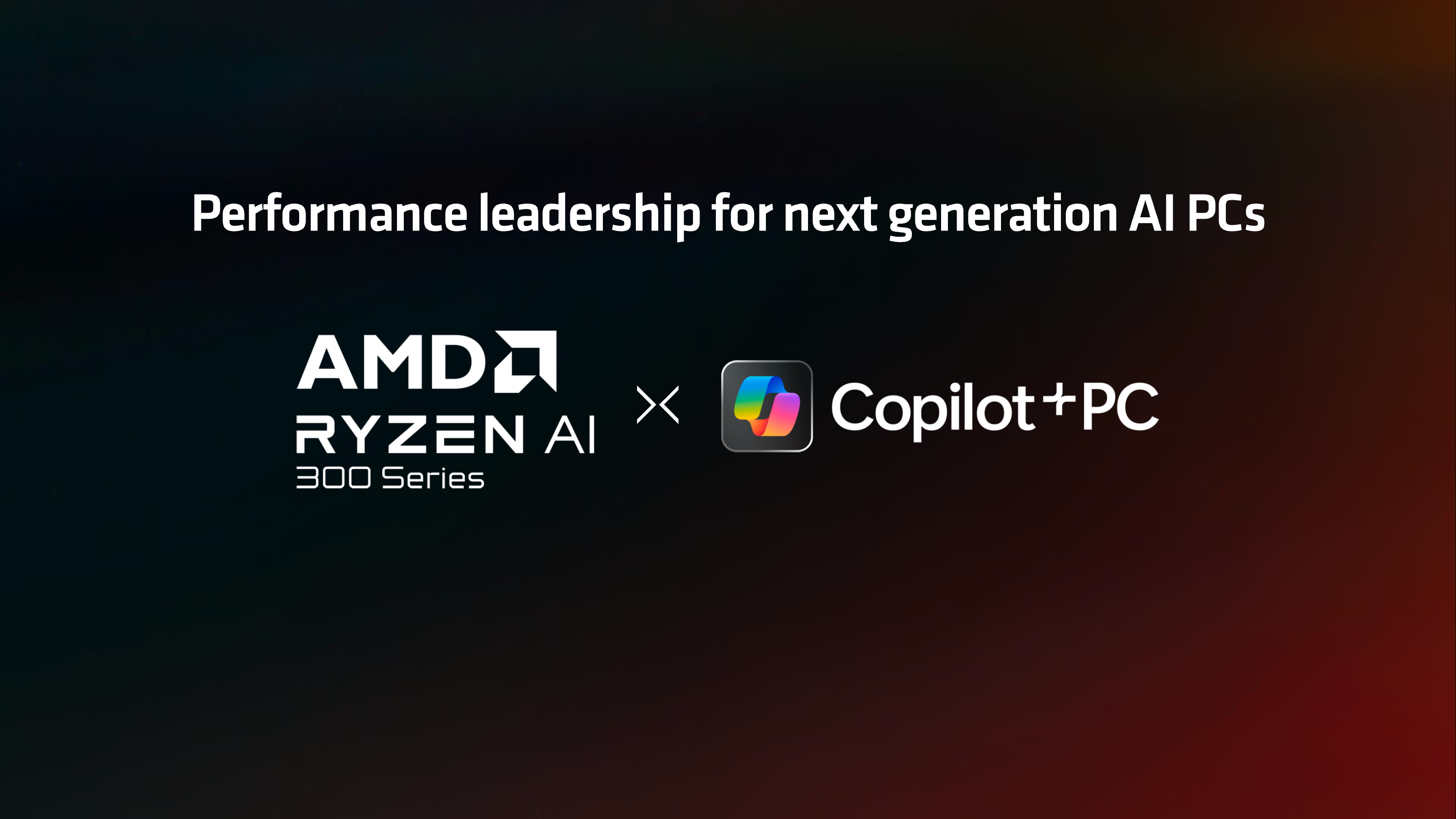
Today, AMD is finally launching its new Ryzen AI 300 “Strix” APU family for laptops, and the name may confuse you a bit, but it’s a new approach for a fresh start in the AI PC ecosystem. AMD’s Ryzen naming scheme over the last two generations has looked something like this:
- Ryzen 7040 (Phoenix) -> Ryzen 8040 (Hawk) -> Ryzen AI 300 (Strix)
The launch of the 300 series will mark the 3rd generation of the PC AI APU, with Phoenix being the first and Hawk being the second. It is also mentioned that with Ryzen AI, AMD is converging its portfolio and no longer relying on a fixed TDP for a selected SKU. So they no longer need to use the U/H/HS series branding. Instead, AMD is giving OEMs the flexibility to adjust these APUs to their needs with TDPs from 15W and up to 54W. The “HX” designation will mark the cream of the crop of SKUs while the non-HX SKUs will be the power-efficient designs.
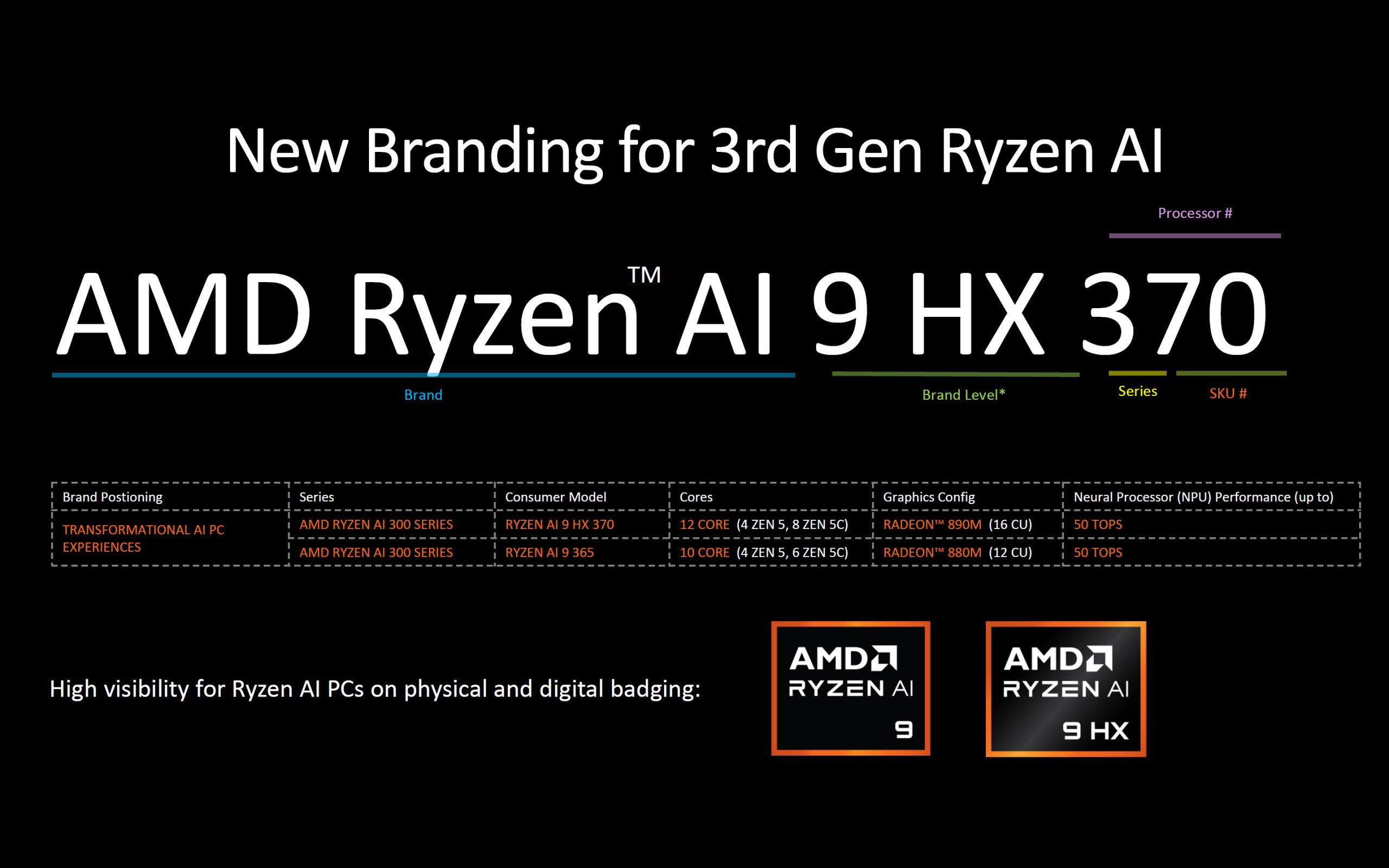
As mentioned above, the AMD Ryzen AI 300 “Strix” APUs combine three major core technologies which include:
- Zen 5 (Processor cores)
- rDNA 3.5 (GPU cores)
- XADN 2 (NPU Cores)
AMD Zen 5 is an all-new architecture (deep dive here) that will also be introduced on several other processor families such as the Ryzen 9000 “Granite Ridge” desktop processors for high-end PCs and the 5th Gen EPYC “Turin” processors for data centers.

AMD Strix APUs are still based on a single monolithic die based on TSMC’s 4nm process node and come with up to 12 cores and 24 threads that use both Zen 5 and Zen 5C cores. This approach is implemented to achieve maximum efficiency with the Zen 5C cores and maximum performance with the Zen 5 cores, as the former tend to run at a slightly lower clock speed while maintaining the same ISA. The Strix APU die measures 12.06 x 18.71 mm, or nearly 225 mm2.
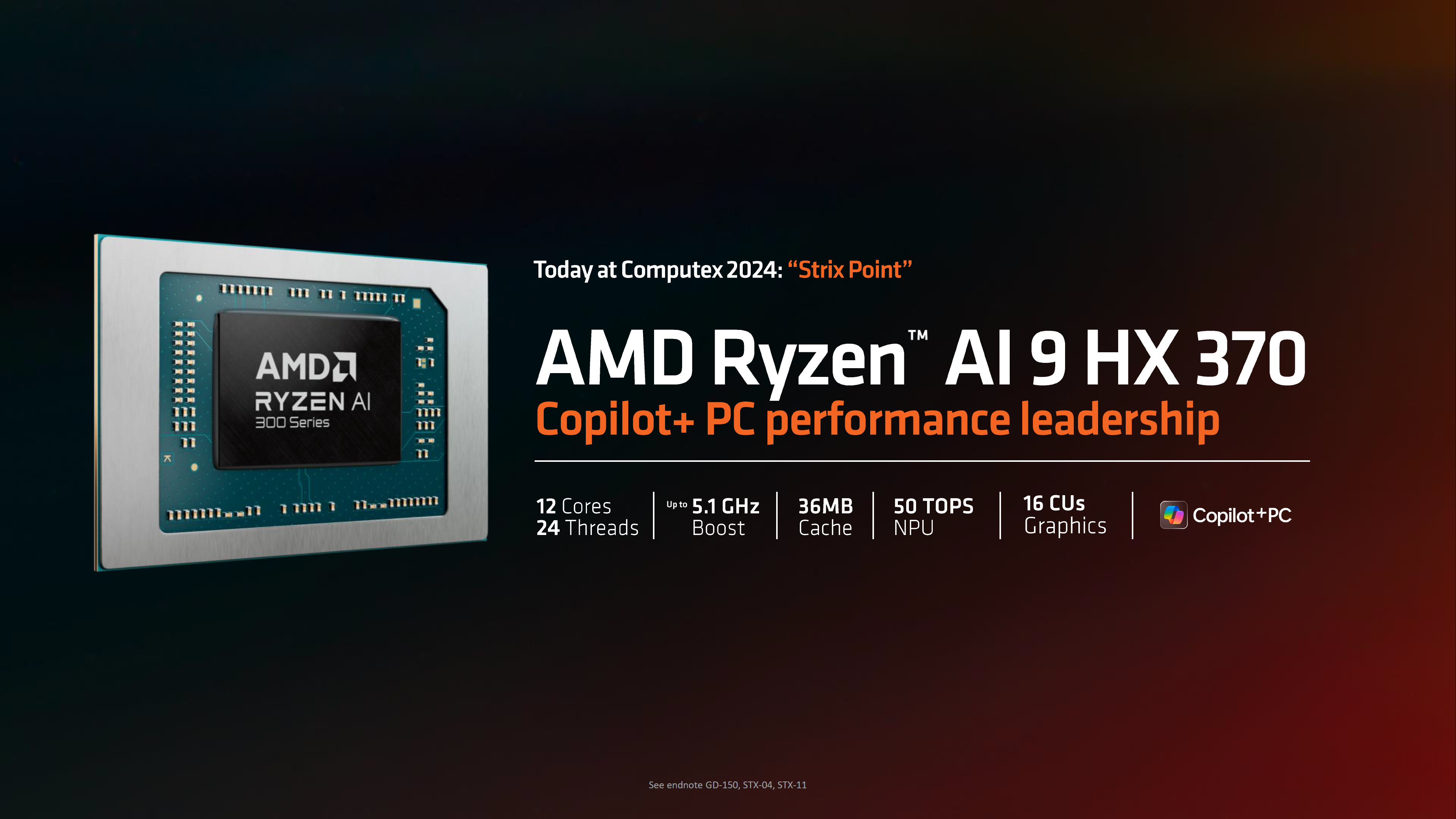
The AMD RDNA 3.5 iGPU for Ryzen AI “Strix” APUs is now optimized and features some architectural updates as well as support for a higher number of compute units which stands at 16 for the flagship part.
Some of the improvements in RDNA 3.5 over the RDNA 3 architecture were performance/watt optimization, performance/bit optimization, and better power management for longer battery life. AMD RDNA 3.5 GPUs feature the following:
- 2x Texture Sampling Rate: The most common subset of texture sampling operations are now double-rate for common game texture operations.
- 2x interpolation and comparison rate: Most rich ISA vectors for interpolation and comparison now have twice the rate of common operations in shaders.
- Improved memory management: Improvements to primitive batch processing to reduce memory access, better compression techniques, reduced workload, and optimized LPDDR5 access.

Next up, we have the showstopper, the XDNA 2 NPU, offering up to 55 TOPS on its own, which is huge. The NPU is faster than the one featured on the Snapdragon X CPU platform and faster than the Intel Lunar Lake platform which AMD says should hit around 45 TOPS.
AMD Ryzen AI 300 “Strix” APU Benchmarks and Specifications
Okay, now that the main IPs are known, we can talk about the SKUs. For now, AMD is only introducing two SKUs within its Ryzen AI 300 “Strix” family. The Ryzen AI 9 HX 370 and the Ryzen AI 9 365.
The Ryzen AI 9 HX 370 is a 12-core, 24-thread chip with a four Zen 5 and eight Zen 5C configuration. This chip runs at boost frequencies of up to 5.1 GHz, offers 36 MB of cache (24 MB L3 + 12 MB L2), and the Radeon 890M iGPU with 16 compute units or 1024 cores. So compared to the previous flagship, the Ryzen 9 8945HS, you get 50% more cores/threads, 33.3% more compute units, and 3.12x the NPU performance, which is a huge gain from one generation to the next.
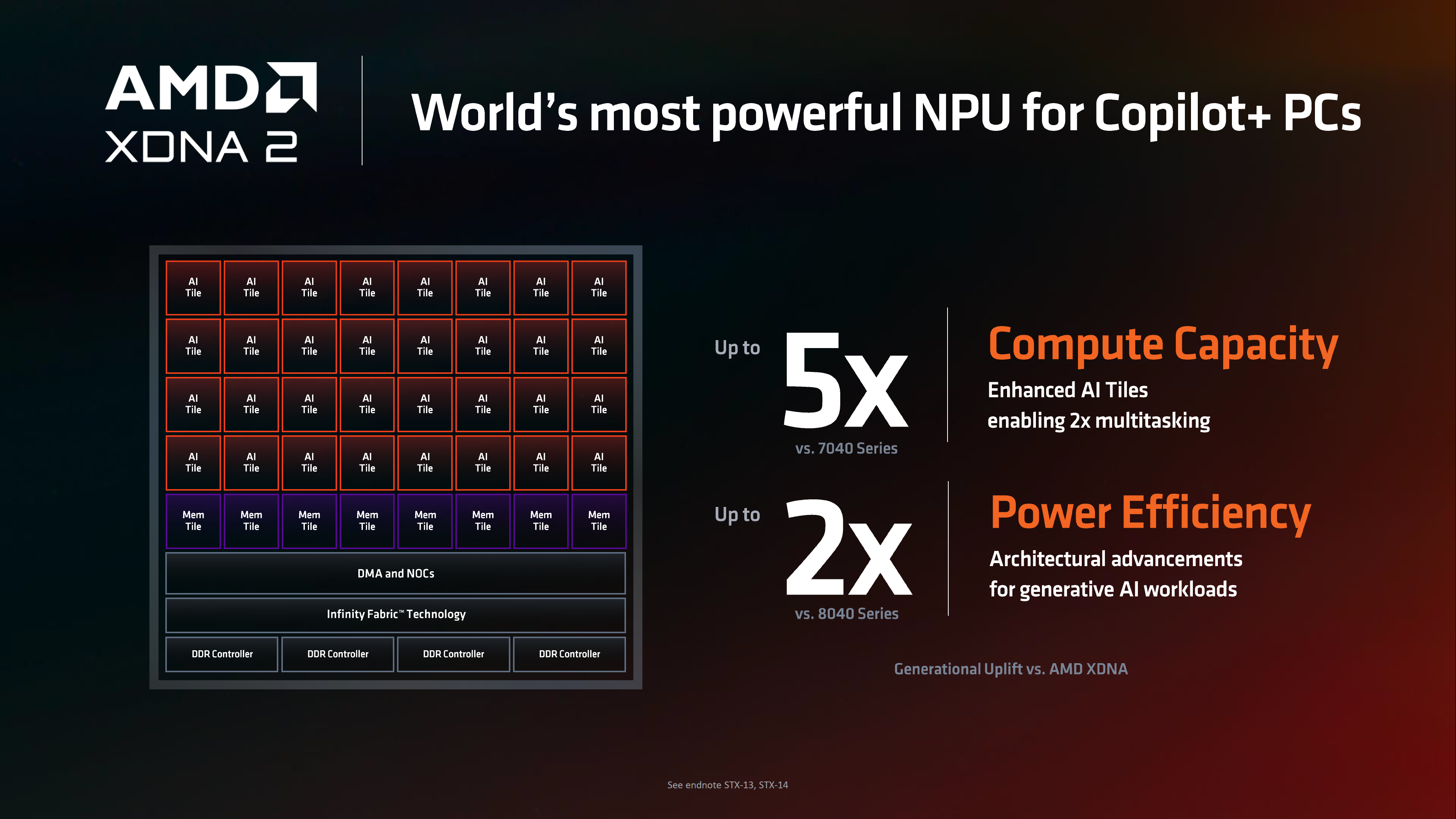
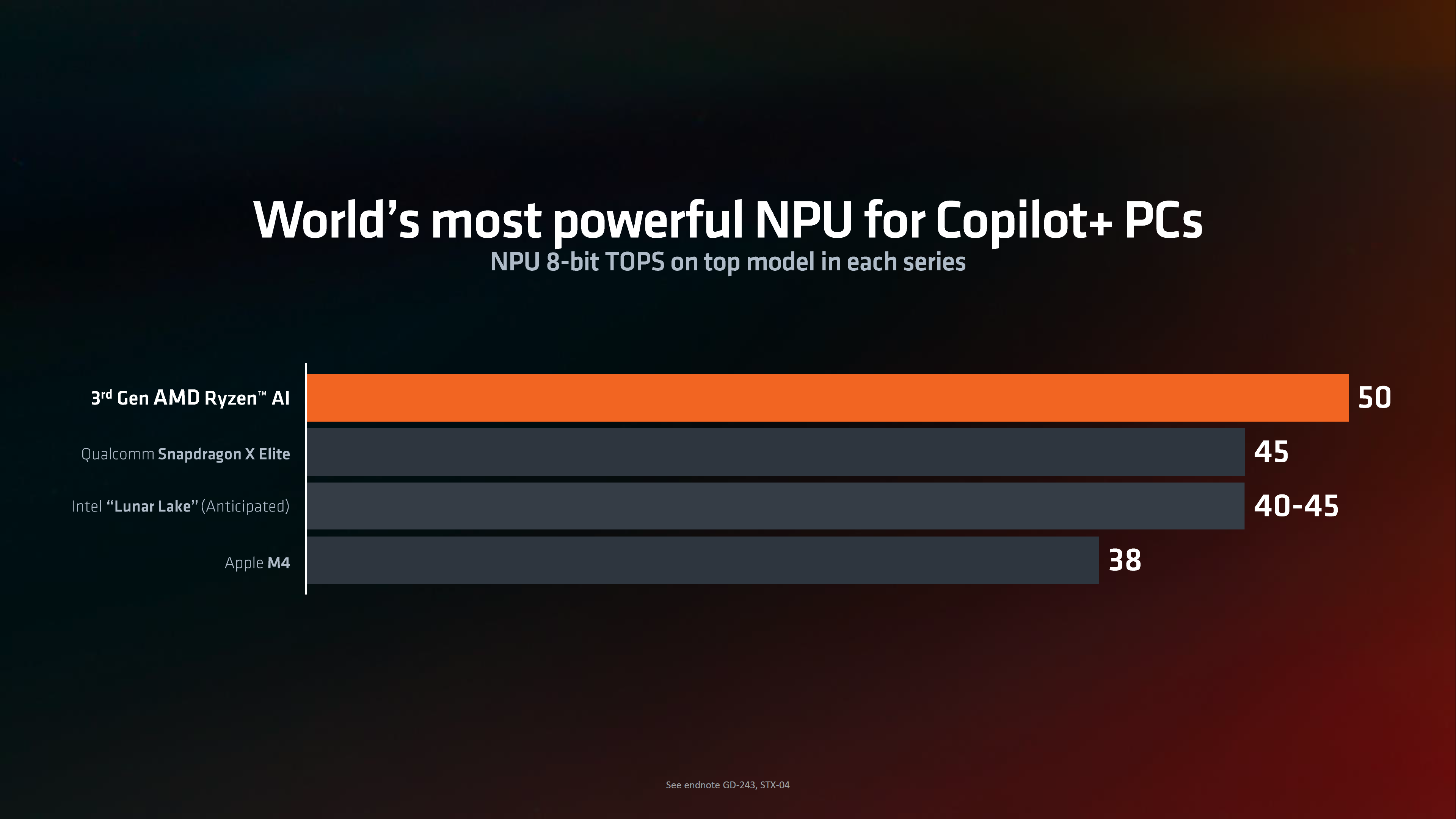
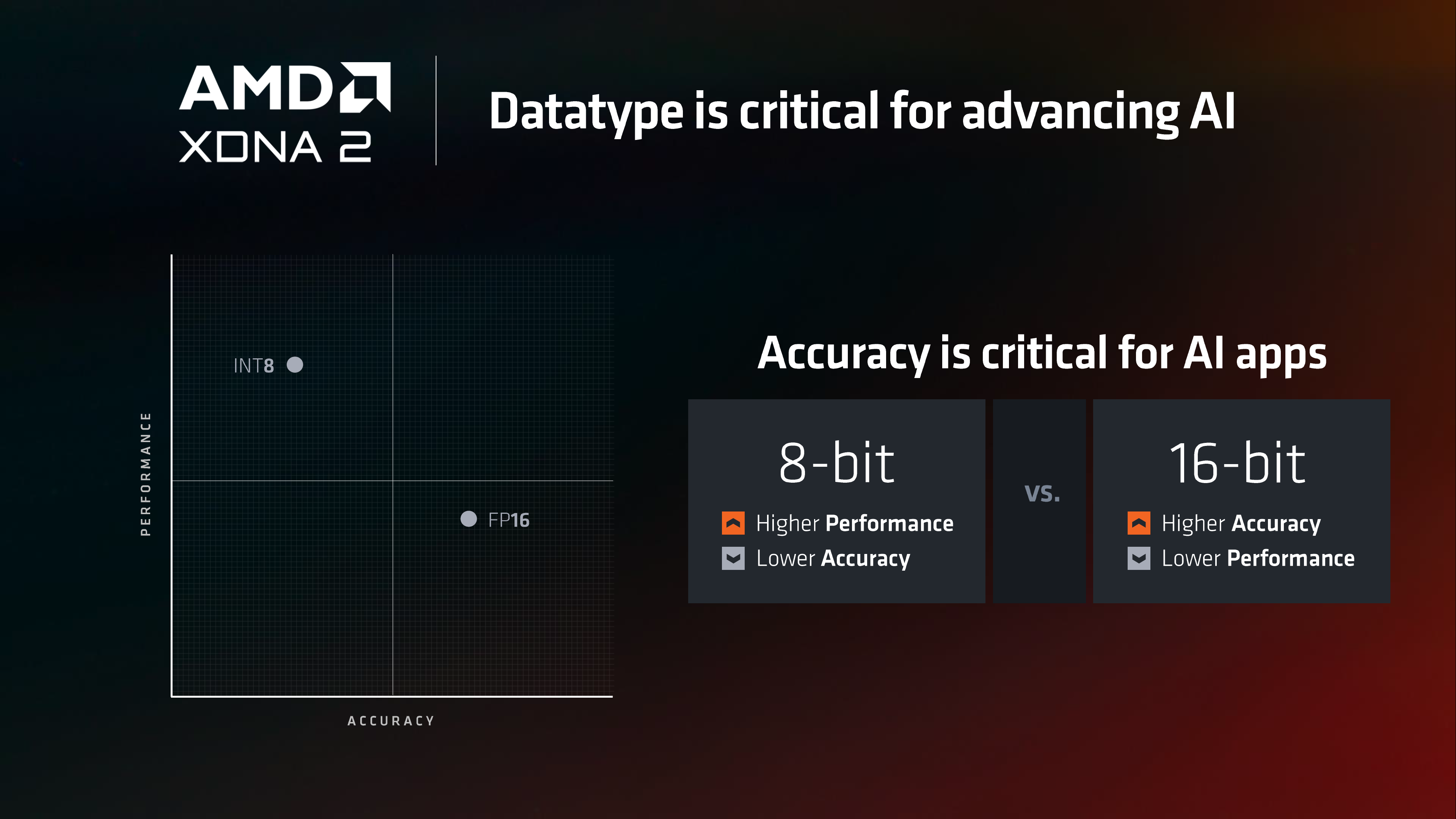



AMD claims that the XDNA 2 NPU features enhanced AI tiles that enable 2x the multitasking capabilities for increased compute and are also 2x more efficient with specific improvements for GenAI workloads. This allows the XDNA 2 NPUs to be up to 5x faster than last-gen offerings in LLMs. There is an even higher-end chip, the Ryzen AI 9 HX 375, which offers 55 TOPS of AI NPU performance and seems to be limited to a few laptops such as the HP OmniBook Ultra.
The second chip in the lineup is the AMD Ryzen AI 9 365, a 10-core, 20-thread processor with a boost clock speed of up to 5.0 GHz, 34 MB of cache, and a Radeon 880M iGPU with a total of 12 compute units or 768 cores. This chip comes with four Zen 5 cores and six Zen 5C cores. Both Strix APUs offer the same level of NPU capabilities with their XDNA 2 hardware delivering up to 55 TOPS of AI performance.
AMD Ryzen AI “HX” APU:
| Processor Name | Architecture | Cores / Wires | Clock speeds (max.) | Cache (total) | AI Capabilities | iGPU | TDP |
|---|---|---|---|---|---|---|---|
| Ryzen AI 9 HX 375 | Zen 5 / Zen 5C | 24/12 | 2.0 / 5.1 GHz | 36MB/24MB L3 | 85 TOP AI (55 TOP NPU) | Radeon 890M (16 CU @ 2.9 GHz) | 28 W (cTDP 15-54 W) |
| Ryzen AI 9 HX 370 | Zen 5 / Zen 5C | 24/12 | 2.0 / 5.1 GHz | 36MB/24MB L3 | 80 TOP AI (50 TOP NPU) | Radeon 890M (16 CU @ 2.9 GHz) | 28 W (cTDP 15-54 W) |
| Ryzen AI 9 HX PRO 370 | Zen 5 / Zen 5C | 24/12 | 2.0 / 5.1 GHz | 36MB/24MB L3 | 80 TOP AI (50 TOP NPU) | Radeon 890M (16 CU @ 2.9 GHz) | 28 W (cTDP 15-54 W) |
| Ryzen AI 7 PRO 360 | Zen 5 / Zen 5C | 12/24? | 2.0 / 5.0 GHz | 36MB/24MB L3 | 80 TOP AI (50 TOP NPU) | To be determined | 28 W (cTDP 15-54 W) |
| Ryzen AI 7 365 | Zen 5 / Zen 5C | 10/20 | 2.0 / 5.0 GHz | 30MB / 20MB L3 | 80 TOP AI (50 TOP NPU) | Radeon 880M (12 CU @ 2.9 GHz) | 28 W (cTDP 15-54 W) |
| Ryzen AI 7 HX 350? | Zen 5 / Zen 5C | 8/16 | To be determined | 24MB/16MB L3 | 80 TOP AI (50 TOP NPU) | 12 rDNA 3+ CU ? | 28 W (cTDP 15-54 W) |
| Ryzen A5 HX 330 ? | Zen 5 / Zen 5C | 6/12 | To be determined | 20MB / 12MB L3 | 80 TOP AI (50 TOP NPU) | 8 RDNA 3+ CU ? | 28 W (cTDP 15-54 W) |
When it comes to laptops, here are all the latest models you can get right now:

With the world’s fastest NPU, delivering 55 AI TOPS, AMD can indeed disrupt the AI PC segment with its Ryzen AI 300 series chips. We can expect more laptops by launch and better availability by holiday 2024.



